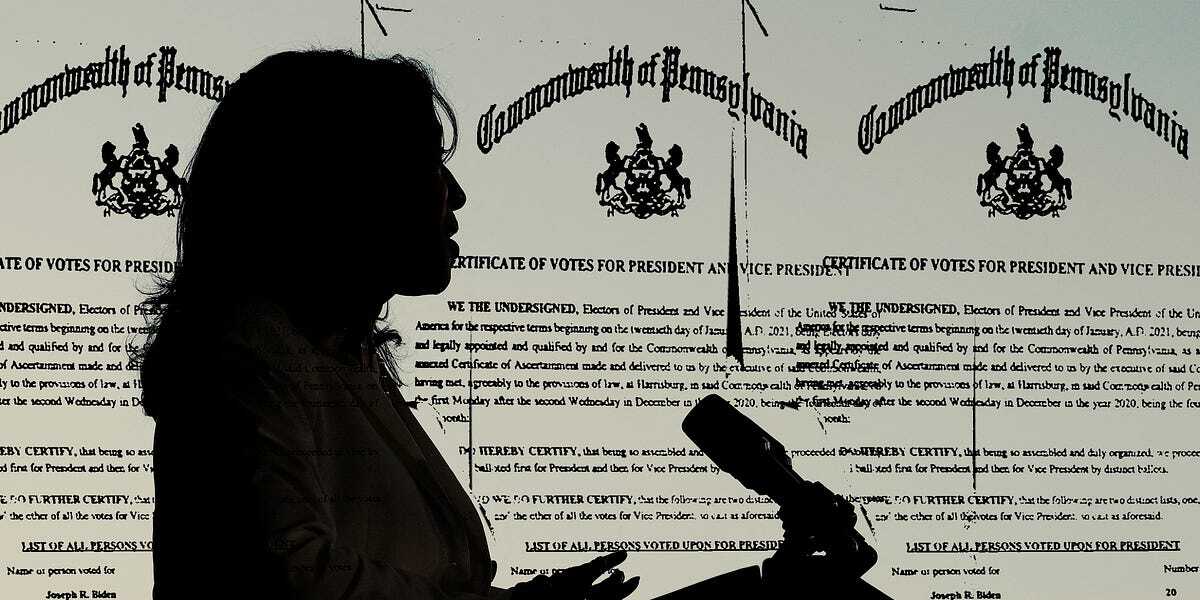A lot of what needs to be done is making sure that the Harris win is large enough that you can’t easily claim that a handful of ballots should be tossed and change the outcome. That means:
- Check your voter registration — part of the Republican strategy has long been invalidating registrations so people can’t vote
- Volunteer — nothing in the world quite like talking to people.
- Donate — money is used for everything from ads to voter turnout operations
- Organize; be prepared to turn out with others in your community to actively object to any effort to ignore your votes



The EC isn’t really that complicated. It means that the election is not settled by a national popular vote, but rather with the result of a weighted average of 50 State elections + Washington, DC. This weighted average is based on the number of seats each state has in the House (which is roughly proportional) plus the Senate (where each State has two seats). The net result is that the weighted average overweights smaller states.
The way it works now, each campaign pre-selects a slate of electors who would get to vote in the EC if their candidate wins that state. So the likelihood that an elector casts a different vote is slim, because they are supporters of the candidate who won the election.
Absolutely, and it has happened twice since 2000. Both times the Republican won the EC while losing the popular vote. It happened because they did better in the smaller states than the competition did, and we already established the EC purposely overweights smaller states.
It all works this way because, historically, there was no requirement that EC slates be chosen by popular vote at all. The State Legislatures themselves picked who they would send to the EC. And while they were sent with a directive on who to vote for, they didn’t have to comply, and there were Presidential elections that weren’t decided until the EC actually made their votes, as any one who has watched Hamilton knows. But over the years, several states decided to have the EC slates chosen by popular vote, until it became the norm.
So one possible problem is that because of this vestigial alignment with the will of the Legislature, the Legislature has the last word on the EC slates, and had the power to totally ignore the election if it wants. State Legislatures haven’t done this to date. It hasn’t been done since 1960 in Hawaii, when there were serious irregularities with the vote, acknowledged by both parties, and the Legislature acted to make sure they got the result right, by certifying both slates and then withdrawing the one that lost after the recounts.
(Fun fact for that 1960 election: the losing candidate was Nixon, who happened to be VP at the time, and had the job to preside over the counting of his loss in HI even though technically both slates of votes were sent by HI.)
You missed an important detail: most states give all their electoral votes to whoever won that state, so for example whoever gets 51% of the votes in Texas gets 100% Texas’s electoral votes. The result is that most states’ electoral votes are easily predicted by post elections, leading presidential candidates to focus on a handful of “swing” states where the outcome of that state’s election is in question. Another result is that it suppresses voter turnout in non-swing states because people their feel like the outcome of their state’s election is predetermined.
Thank you for this detailed response.
I find it incredible that it’s not really the people who vote for their leader but some electors that, from my understanding, aren’t necessarily elected by the people?
The original concept was that the electors were chosen by the State Legislature. So not directly via popular vote, but indirectly by a body that was elected by a popular vote, so is still accountable to the public.